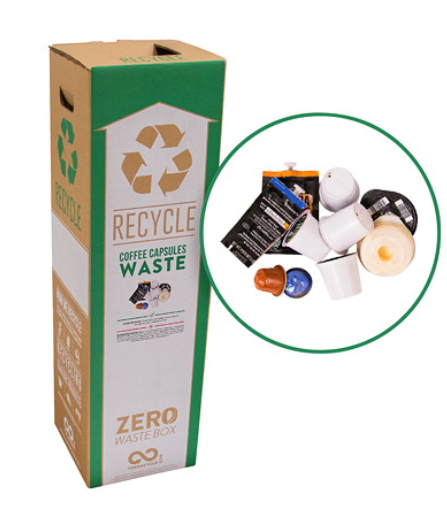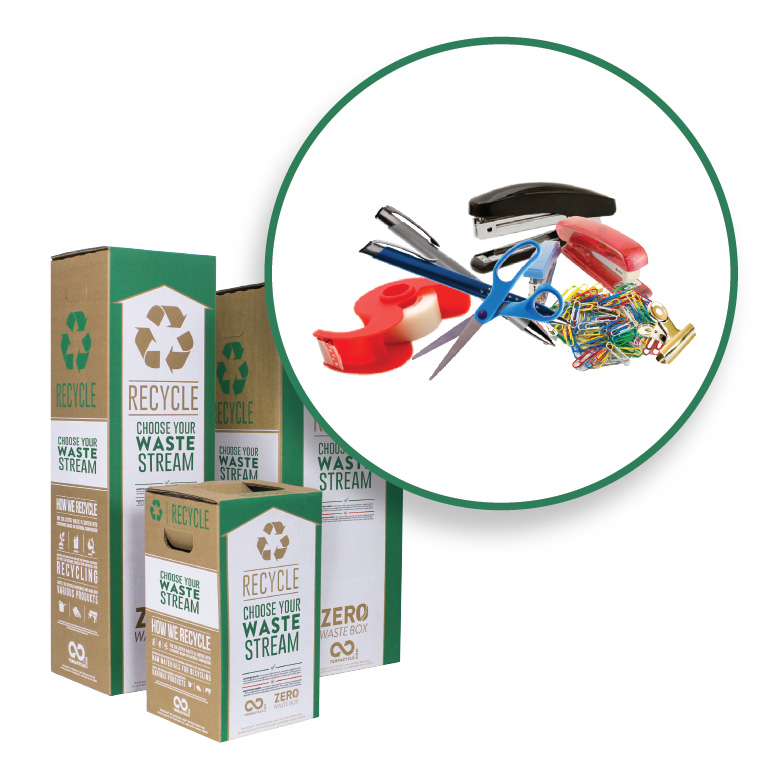Purpose
Queen's University Campus has implemented comprehensive waste management protocols to address the environmental impact of waste disposal. By promoting proper waste management guidelines, the university aims to minimize negative environmental consequences, such as landfill accumulation, and foster sustainable habits among its community members.
Scope
All individuals within the Queen’s University campus community, comprising of employees, students, contractors, service providers, and visitors.
Recyclables and Garbage
General Waste (Landfill)
Items that cannot be recycled should be appropriately disposed of by placing them in the designated Landfill bin. It is crucial to ensure that these items are not mixed with other bins to prevent contamination of recyclable materials. Common examples of Landfill Items include and are not limited to: Fountain Cups & Food Wrappers, Condiment Packages, Foil, Plastic Shopping Bags, To-Go Coffee Cups (unless deemed as compostable, which should be placed in the green Organics bin)
Mixed Paper
Paper and cardboard-based materials should be placed in the designated Mixed Paper recycling bin. Please ensure that the paper and cardboard items are free from any food residue or contamination. Any food contaminated cardboard/paper items should be placed in the Organics bin. Common examples of Mixed Paper Items include and are not limited to: Newspaper, Shredded Paper, Printed Paper, File Folders, Magazines Boxboard (i.e Cereal Boxes). Cardboard boxes should be flattened and placed behind recycling bins.
Cans, Glass & Plastic
Plastics, aluminum, and glass materials can pose a significant threat to wildlife and the environment if not properly managed. To prevent harm to the ecosystem and promote the reuse of these materials, please make sure to place items such as plastic food containers, soda cans, and glass bottles in the designated Cans, Glass & Plastic blue bin. Common examples of Cans, Glass & Plastic items include and are not limited to: Plastic Food & Beverage Containers, Aluminum and Glass Bottles & Jars. Please note that all items placed in the blue bin need to be rinsed first. Additionally, check if the plastic item(s) are made of compostable plastics - if so, they should be placed in the green Organics Bin.
Organics
Composting is an effective way to reduce landfill waste and lower greenhouse gas emissions. Therefore, any leftover food items, materials classified as compostable (such as compostable cups and plates), and food-soiled cardboard should be properly placed in the designated green Organics bin.
Below are downloadable Waste & Recycling signage posters that can be distributed to staff, posted in your office or displayed when hosting a conference or event.
Disposal-Slip Waste Items
Furniture
Facilities operates a furniture reuse program, where items still in usable condition are diverted from landfill and reused by different departments on campus. Facilities operates the furniture reuse program, and assists departments in the removal, relocation and reuse of various office furniture items. The Queen’s ReUseIt website is an online platform for exchanging campus furniture items. Simply sign in with your staff netID and password to view furniture items available for reuse, or to upload items you may be looking to get rid of.
If an item is in good condition but a department is unable to find a new location for it in time, Facilities will determine if it should be placed in surplus for future reuse opportunities.
Items that have reached their end of life or are not suitable for reuse should be submitted for disposal. To dispose of furniture items, departments can fill out a furniture pick up request from the Facilities website.
- Disposal requests are paid for through the University’s Central Waste Fund. This does not include ancillary departments on campus.
- In the event of a last minute move or short timeline, contact the Resource Recovery & Sustainability Specialist.
- Some items may be taken off campus for personal use depending on circumstance, as discretion of the Resource Recovery & Sustainability Specialist
E-Waste
E-waste refers to electronic products that have been discarded, abandoned, or become obsolete. These items, ranging from smartphones and laptops to computer keyboards and monitors, contain valuable materials and harmful substances that need to be handled with care. To facilitate the process of disposing of E-Waste, an E-waste Request Form must be filled out. It is recommended that memory containing devices be wiped prior to the pick up of E-Waste. All E-Waste items are sent to a contracted E-Waste recycler.
Scrap Metal
Scrap metal refers to discarded or surplus metal materials that are no longer needed for their original purpose and are intended for recycling or disposal. Examples include leftover metal pieces from construction projects, old machinery, or obsolete metal components. To facilitate the proper collection and disposal of scrap metal, please fill out Scrap Metal Request Form.
Printer Cartridges
Printer cartridges often contain hazardous materials. Therefore, it's crucial to follow proper disposal practices to minimize environmental impact. If an E-Waste request has been submitted, printer and toner cartridges should be included within that request. However, if an E-Waste request is not in place, a Printer Cartridge Request Form must be completed for proper disposal.
Frequently Asked Questions
What happens if recycling is contaminated?
When a custodian removes a bag of paper, cans/glass/plastic recycling or organics, and it contains more than 10% of garbage then the whole bag of recycling must go to waste. The recycling facility will not accept contaminated recycling as these items are difficult to recycle and find buyers for.
Is Queen's part of the municipal recycling system?
Queen’s is not part of the municipal recycling system, the university is part of the ICI sector (industrial, commercial, institutional).
The municipality of Kingston and Queen’s University are guided by different legislation. The City has its own recycling facility (Kingston Area Recycling Centre) while the University uses a contracted waste hauler to remove waste and recycling from the campus.
However, the two systems are very similar and we work to make the differences clear to the Queen’s and Kingston community.
Where does our waste go?
Organic material collected from Queen’s composting program is sent to Tomlinson Organics in Joyceville, Ontario where it is broken down by their composting process and then sold as compost for gardens and farms. Recycling materials from Queen’s are collected and sent to Brockville Waste Management Transfer Station.
How much waste does Queen's generate annually?
- 3178 MT of waste
- 744 tonnes of recyclables are diverted from landfill annually, representing a 23% diversion rate
- More than 85% of our current waste stream can be diverted
Why are my coffee cups and plastic bags no longer recyclable?
Coffee cups have a wax or plastic coating on them so that they can hold hot liquid. This coating prevents the cups being broken down into pulp for paper recycling. In addition, to-go coffee cups are often used as as mini garbage cans and contain all kinds of items (banana peel, wrappers, napkins), and this results in contamination of the recycling stream. To properly dispose of a coffee cup at Queen's, place it in the waste container.
Plastic grocery bags are no longer acceptable in recycling streams, because they are very difficult to recycle into new materials. Plastic bags require a specific recycling process and there is little market demand for this item.
Say no to plastic bags and one-time use cups, and choose reusable versions instead.
How can I safely dispose of E-Waste
Unused electronics should be submitted to the E-Waste program when no longer required.
Disposal process
Step 1: The requesting office completes an E-Waste/Equipment Pickup Request. Ensuring that a complete list of items to be picked up is documented in the Description of Work field.
Step 2: The requesting office will receive a confirmation email complete with a submission number. (The submission number should always be used when referencing the request).
Step 3: The requesting office labels the devices to be picked up with the submission number, so moving services knows they are taking the correct items.
Step 4 The requesting office places the e-waste in a secure area to await pick up. Secure areas are those not easily accessed by anyone outside of your unit’s staff, preferably a locked room or cabinet. Under no circumstances leave e-waste in hallways, outside of buildings, or on loading docks even for a short period as this may expose the University to risk.
Step 5: Moving services will arrive to remove the e-waste.
Can I recycle office supplies? What about coffee capsules?
Queen's Strategic Procurement Services has negotiated special rates on select products to make it easy and cost-effective to collect and send hard-to-recycle items for processing. The best rates are offered by Grand & Toy, and they offer two types of "Zero Waste" boxes to help ensure proper waste management in the office setting:
Coffee Capsules - Zero Waste Box
An estimated 20 billion coffee capsules will be consumed this year and most will end up in landfills.
Lets do our part to avoid that.
- Log into your Queen's acQuire account, go to the shopping page and search for TerraCycle
- Order the appropriate sized TerraCycle Coffee Capsules - Zero Waste Box (box sizes and prices below)
- Collect your coffee capsules
- Ship the filled box to TerraCycle using the prepaid label on the box
- Order a new box
Office Supplies - Zero Waste Box
Recycle your office supplies in four easy steps:
- Log into your Queen's acQuire account, go to the shopping page and search for TerraCycle
- Order the appropriate sized TerraCycle Office Supplies - Zero Waste Box (box sizes and prices below)
- Collect your discarded supplies
- Ship the filled box to TerraCycle using the prepaid label on the box
- Order a new box
Accepted waste includes discarded, non-electronic office tools such as tape, desk organizers, card and document filers, binders, calendars, labels, staplers, writing instruments, hole punchers, dividers, paper cutters, and correction supplies. You can also recycle fasteners including paper clips, staples, and binder clips, and backing from sticker and label sheets.
Where can I recycle my disposable masks?
In an effort to reduce disposable mask litter on our campus and to eliminate this waste from landfill,Terracyclecollection boxes have been deployed to the buildings listed below. You can eliminate mask waste from going to landfills by using these collection boxes. If you can’t find one, please contact Facilities. If you notice a box is full, please contact Fixit.
As mask usage declined since the COVID-19 pandemic, mask collection boxes on campus have been removed due to reduced demand.
